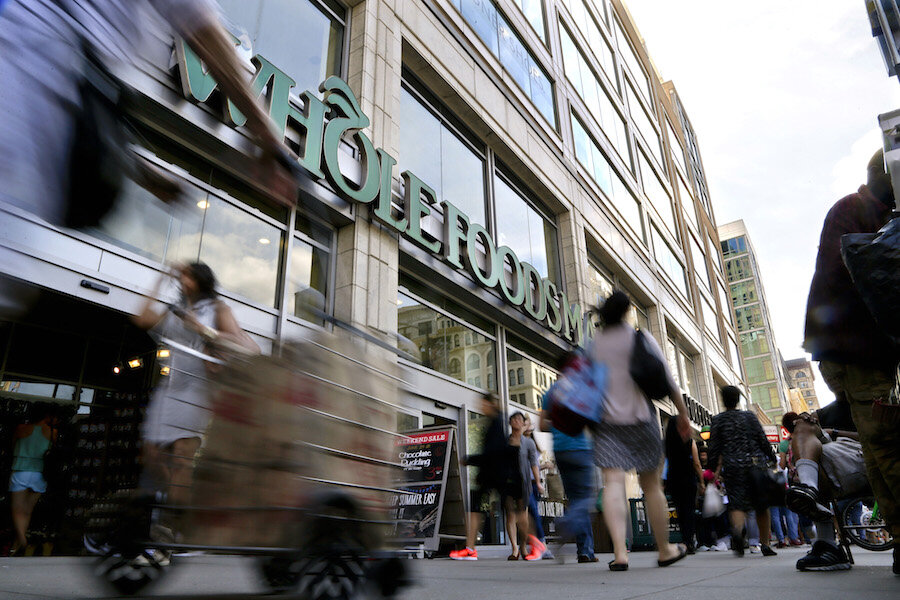Lettuce and tattoos? Whole Foods revamps for Millennial shoppers
Loading...
Tattoos and organic produce might not be an intuitive combination, but Whole Foods suggests it will help attract a bigger Millennial market.
Whole Foods is shifting direction in an attempt to revitalize their share of Millennial shoppers. The shift includes a new line of lower-priced grocery stores called 365 by Whole Foods Market.
The 365 chain of stores is designed for Millennials and budget shoppers. According to the website, it will feature heavier discounts, competitive prices, and a few innovative additions, like Whole Food “Friends,” third-party businesses that operate in or nearby the 365 shops. The shift follows a year of fairly steady decline in stock prices for Whole Foods.
“This is the same company and same set of quality standards,” Walter Robb, Co-CEO of Whole Foods told Bloomberg News in an on-air interview. “It’s just a fresh new format that I think will allow us to take those standards into markets and communities perhaps that Whole Foods Markets never would have been able to go.”
But why would Whole Foods single out the Millennial market? It’s a big one.
“Millennials are poised to reshape the economy; their unique experiences will change the ways we buy and sell, forcing companies to examine how they do business for decades to come,” Goldman Sachs analysts wrote in their Millennial infographic.
The Millennial generation, defined as people born between 1980 and 2000 by Goldman Sachs, is one of the largest generations in history and the biggest in US history. With 92 million Millennials, the generation is even larger than the 77 million Baby Boomers. Attracting the large demographic could buoy sales in the long term, but currently, the demographic is still cash-strapped.
With lower employment rates and typically smaller incomes, many Millennials have less spending money than other generations, according to Goldman Sachs. It’s uncertain how many would be attracted to Whole Foods, which has gained the derisive nickname “Whole Paycheck” due to high prices.
To combat a high-priced reputation Whole Foods is leveraging a proven brand, what it calls competitive prices, and Millennial-friendly product additions to their new 365 stores.
The 365 in-house brand is likely already identifiable to many current Whole Food shoppers. The product line began in 1997 and the label was placed on items to indicate high quality, but lower, more competitive prices. The 365 by Whole Food Markets stores will leverage the pre-established brand to gain low-price, quality credibility.
It is unclear as of now how drastic the price difference between Whole Foods and 365 chains will be. Whole Foods Markets Inc., has made clear that the focus on organic, healthier food will be the same in both chains, which could mean “low prices” would be relative to Whole Foods current above average prices, reports Market Watch.
To sway Millennial and budget-shopping doubters, the final appeal could be layout and products based on convenience. The inventory of 365 stores, which will be smaller than Whole Foods stores, will be heavily curated for price and quality with store layouts to make it easy for shoppers to move around, according to the website.
Whole Food “Friends,” independent business working inside the stores, could also bring a unique character to each store.
“Friends of 365 may be any type of business — from food and drinks to fashion, body care products, services, and more. (Record shop? Tattoo parlor? Maybe!),” it states on the Whole Foods website.






